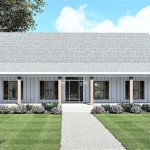Falling Water House Plants: Essential Aspects
Falling Water House, designed by Frank Lloyd Wright, is renowned not only for its architectural brilliance but also for its stunning integration with nature. Plants play a crucial role in enhancing the indoor and outdoor spaces of this iconic masterpiece, creating a harmonious and inspiring environment.
Plant Selection
Wright carefully selected plants that complemented the natural surroundings and the architectural elements of the house. Native species were primarily chosen, such as ferns, mosses, and rhododendrons, which thrived in the local climate and required minimal maintenance. These plants blended seamlessly with the surrounding forest, creating a sense of continuity between the interior and exterior spaces.
Indoor Plants
Inside Falling Water House, plants were strategically placed to enhance the flow of light and air. Ferns, known for their ability to purify air and create a calming atmosphere, were suspended from the ceiling or placed in niches within the house. Cacti and succulents added a touch of desert beauty and required little water, making them ideal for the high- humidity environment created by the waterfall.
Outdoor Plants
The outdoor spaces of Falling Water House are equally impressive, with carefully landscaped terraces and gardens. Rhododendrons and mountain laurels provide privacy and structure to the outdoor areas, while ferns and mosses create a lush undergrowth that complements the terraces and walkways. Native trees, such as oak and maple, shade the house and create a sense of shelter and intimacy.
Waterfall Plants
One of the most iconic features of Falling Water House is its cascading waterfall. Plants such as maidenhair ferns and mosses thrive in the moist environment created by the waterfall, adding a touch of natural beauty and soothing sounds to the space. These plants not only enhance the aesthetic appeal but also help to regulate humidity levels within the house.
Plant Care
Wright understood the importance of proper plant care and maintenance. The house was designed with built-in planters and irrigation systems to ensure that plants received optimal water and nutrients. The use of native species also minimized the need for pesticides and fertilizers, promoting a healthy and sustainable environment.
Conclusion
Falling Water House Plants are an integral part of the architectural masterpiece, enhancing the indoor and outdoor spaces with their beauty, functionality, and connection to nature. Wright's careful selection and placement of plants create a harmonious and inspiring environment that perfectly complements the architectural integrity of the house. By understanding the essential aspects of Falling Water House plants, we can appreciate the symbiotic relationship between architecture and nature that makes this iconic building a true marvel.

Falling Water Thriving Plants Lady Bird Johnson Wildflower Center

Exploring Frank Lloyd Wright S Famous Fallingwater House

Touring The Frank Lloyd Wright Houses In Laurel Highlands

Facts About Fallingwater That The Public Doesn T Know

Fallingwater At Home With Nature American Lifestyle

Fallingwater Wikipedia

Why I Fell In Love With Frank Lloyd Wright S Masterpiece Fallingwater Daily News

Ad Classics Fallingwater House Frank Lloyd Wright Archdaily

Falling For Frank Lloyd Wright On A Fallingwater Tour Grownup Travels

Architectural House Tour Ii Fallingwater Nalata








